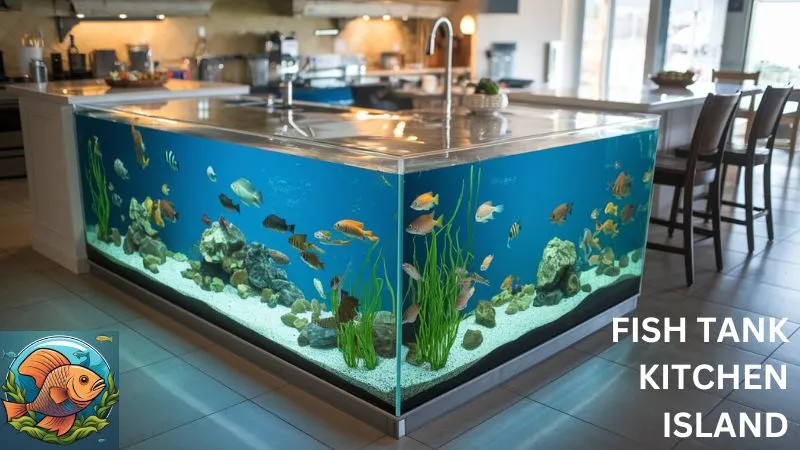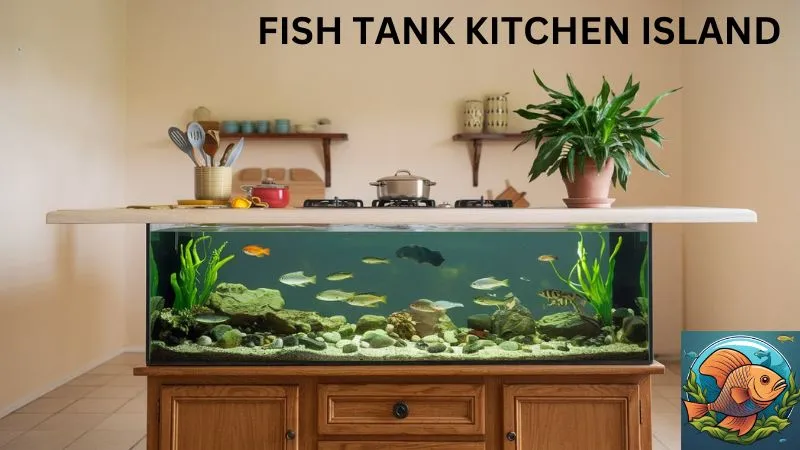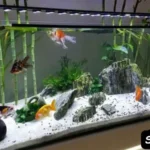fish farming
fish tank kitchen island
Imagine combining two beloved elements of modern home design: the functionality of a kitchen island and the serene beauty of an aquarium. A fish tank kitchen island is a unique, visually captivating centerpiece that can transform any kitchen into a one-of-a-kind living space. Not only does it serve as a practical feature for cooking and dining, but it also adds an immersive, tranquil experience by bringing a piece of the ocean right into your home. This guide from fishtankmagic.com explores everything you need to know about fish tank kitchen islands—from design inspiration to maintenance tips—so you can create a stunning, aquatic focal point in your kitchen.
What Is a Fish Tank Kitchen Island?
A fish tank kitchen island is essentially a kitchen island that incorporates a built-in aquarium. It combines the functionality of a traditional kitchen island (used for cooking, prepping, or dining) with the aesthetic appeal of a fish tank. The aquarium can be designed into the sides of the island, or, in some cases, it may even serve as the base of the island itself. With sleek glass panels housing vibrant fish and aquatic plants, this piece of furniture can bring an unparalleled touch of nature into your cooking and socializing space.
The Growing Popularity of Fish Tank Kitchen Islands
In recent years, homeowners and interior designers have been moving towards personalized, experiential design choices that offer both practicality and visual impact. Fish tank kitchen islands fit perfectly within this trend. Aquariums have long been admired for their calming effects and the way they can bring natural elements into urban environments. In kitchens, where family and friends often gather, this combination of a working surface with a live ecosystem is an increasingly popular way to make a space feel more connected, warm, and unique.
Additionally, technological advancements in aquariums and their accessories—such as LED lighting, filtration systems, and automatic feeders—have made it easier than ever to maintain healthy fish habitats within home furniture. With customization options available, fish tank kitchen islands are no longer just the domain of luxury homes; they are accessible to a wide range of budgets and design preferences.
Design Considerations for a Fish Tank Kitchen Island
1. Size and Shape
When planning a fish tank kitchen island, size is a critical factor. The dimensions of both the aquarium and the kitchen island must harmonize with the overall kitchen layout. An oversized aquarium may dominate the space and make the kitchen feel cramped, while one that is too small might get lost in the overall design.
Rectangular islands with long fish tanks that run along one or more sides are a common choice, as they provide ample viewing area while allowing for the practical use of the island’s top for food prep or dining. If you have a smaller kitchen, a narrower island with a modestly sized aquarium can still create a striking effect without overwhelming the room.
2. Material Choices
The materials used in constructing your fish tank kitchen island are crucial for both aesthetics and functionality. The aquarium itself must be made from high-quality, durable glass or acrylic to ensure long-term durability and clarity. Acrylic tanks are often favored for custom designs because they are lighter and more flexible than glass, though they can scratch more easily.
The island’s countertop should be water-resistant, as maintaining the aquarium might involve some splashes or spills. Popular materials like quartz or granite are ideal choices since they are both durable and water-resistant. Additionally, the cabinetry surrounding the aquarium should be treated to withstand any potential moisture, ensuring that the wood doesn’t warp over time.
3. Aquarium Setup and Themes
Choosing the theme for your aquarium is an exciting part of the design process. Do you want a freshwater or saltwater setup? Each type has its unique benefits, with freshwater tanks generally being easier to maintain and saltwater tanks offering more vibrant marine life. Consider what kind of fish and plants you’d like to feature and plan the aquarium setup around them.
Popular themes for kitchen island aquariums include:
- Tropical Paradise: Featuring brightly colored fish like tetras, guppies, and angelfish amidst lush aquatic plants.
- Marine Oasis: A saltwater aquarium with corals, clownfish, and tangs, evoking the beauty of the ocean.
- Minimalist Elegance: A minimalist approach with a few elegant fish and clean, simple décor, such as sleek black stones and sparse plants.
Lighting is another key design element. LED lights not only illuminate the fish tank beautifully but can also change colors to match the mood or time of day. Whether it’s bright daylight hues or soothing blue tones at night, lighting plays a huge role in setting the overall ambiance.
4. Filtration and Maintenance Systems
A well-designed filtration system is essential for keeping your fish tank kitchen island healthy and vibrant. Most fish tanks use three types of filtration: mechanical (to remove debris), biological (to break down waste products using beneficial bacteria), and chemical (to remove toxins). Choosing the right system will depend on the size of your aquarium, the number of fish, and whether it’s a freshwater or saltwater setup.
It’s important to ensure easy access to the filtration system for regular cleaning and maintenance. This can be built into the cabinetry beneath the tank or in a nearby hidden compartment. Many modern aquariums also come with automated maintenance tools such as automatic feeders and water testers to make upkeep easier for busy homeowners.

Installation and Structural Considerations
1. Weight and Support
Fish tanks are heavy—especially once filled with water, rocks, plants, and fish—so the structural integrity of your kitchen island is a major consideration. On average, a gallon of water weighs around 8.34 pounds, meaning a 50-gallon tank will weigh over 400 pounds once it’s filled. Your kitchen island must be designed to support this substantial weight without risk of collapse.
Consulting with both a structural engineer and a professional aquarium installer is recommended to ensure that the island is properly reinforced. They will help you determine the best support system to accommodate the weight, as well as how to distribute that weight evenly across the kitchen floor.
2. Plumbing and Electrical Connections
Aquariums require a reliable water supply and drainage system, as well as electrical outlets for lighting and filtration equipment. If you’re building a fish tank into your kitchen island, you’ll need to plan for these connections early in the design process. It’s important to install the necessary plumbing and electrical components in a way that they are discreetly hidden yet still easily accessible for maintenance.
Some homeowners opt for a built-in water changing system that allows them to easily drain and refill the tank without having to manually remove water. This can be especially helpful in saltwater tanks where water quality needs more frequent monitoring and adjustments.
3. Ventilation and Humidity Control
Aquariums release moisture into the air, so it’s important to ensure proper ventilation in your kitchen to avoid excess humidity. While modern aquarium systems do a good job of minimizing evaporation, having a good ventilation system in the kitchen—such as a range hood or ventilation fan—can help prevent condensation from accumulating on walls and ceilings.
In addition, it’s a good idea to consider using a dehumidifier if the moisture levels get too high. Excess humidity can lead to issues such as mold or mildew, especially in wood cabinets surrounding the fish tank.
Maintenance and Care
While a fish tank kitchen island is undoubtedly a show-stopper, it does require regular care to keep both the aquarium and the fish healthy. Here are a few maintenance tips:
- Water Changes: Regular partial water changes (about 10-20% every two weeks) help maintain water quality and remove waste.
- Feeding: Feed your fish once or twice a day, being careful not to overfeed, as excess food can degrade water quality.
- Cleaning: Use an algae scraper to clean the tank’s glass and a gravel vacuum to remove debris from the substrate.
- Monitor Water Parameters: Test the water regularly for pH, ammonia, nitrates, and nitrites to ensure a healthy environment for your fish.
If you have a saltwater aquarium, additional care is required, such as maintaining salinity levels and monitoring coral health. However, even freshwater tanks will need consistent care to ensure that the fish and plants thrive.
Benefits of a Fish Tank Kitchen Island
A fish tank kitchen island offers numerous benefits that extend beyond mere aesthetics. Here are some reasons to consider this unique feature for your home:
- Creates a Relaxing Atmosphere: The movement of fish and the gentle bubbling of the aquarium’s filtration system create a calming ambiance, ideal for unwinding after a long day.
- Conversation Starter: A fish tank kitchen island is bound to impress guests and spark conversations, making your kitchen the true heart of your home.
- Increases Property Value: Uniquely designed homes with custom features like a fish tank kitchen island can increase a property’s value and appeal, especially to prospective buyers who appreciate creative, modern design.
- Educational Opportunity: Having a fish tank in the kitchen provides an educational opportunity for children and adults alike, as it allows you to observe and learn about aquatic life up close.
Conclusion
A fish tank kitchen island is more than just a practical surface for food prep—it’s a breathtaking fusion of art, design, and nature that brings tranquility and life into the busiest room of your home. While the initial setup requires careful planning and consideration, the results are well worth the effort. With the right design, proper maintenance, and attention to detail, your fish tank kitchen island can become a stunning centerpiece that enhances the aesthetics and functionality of your kitchen, offering a unique experience for you and your guests.












